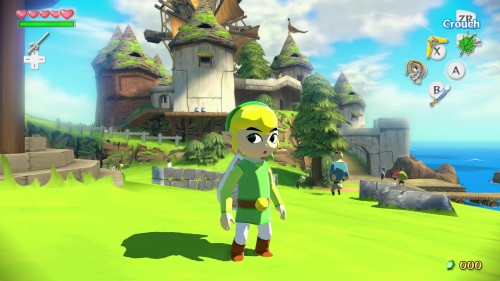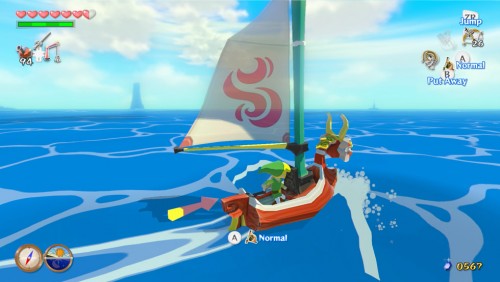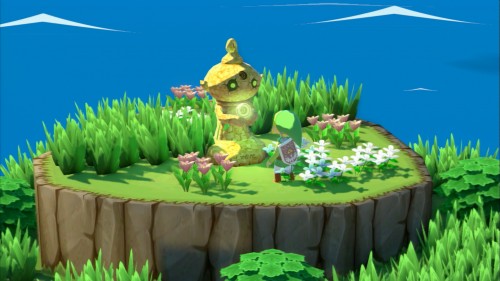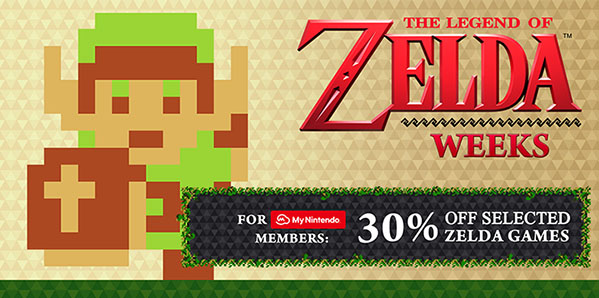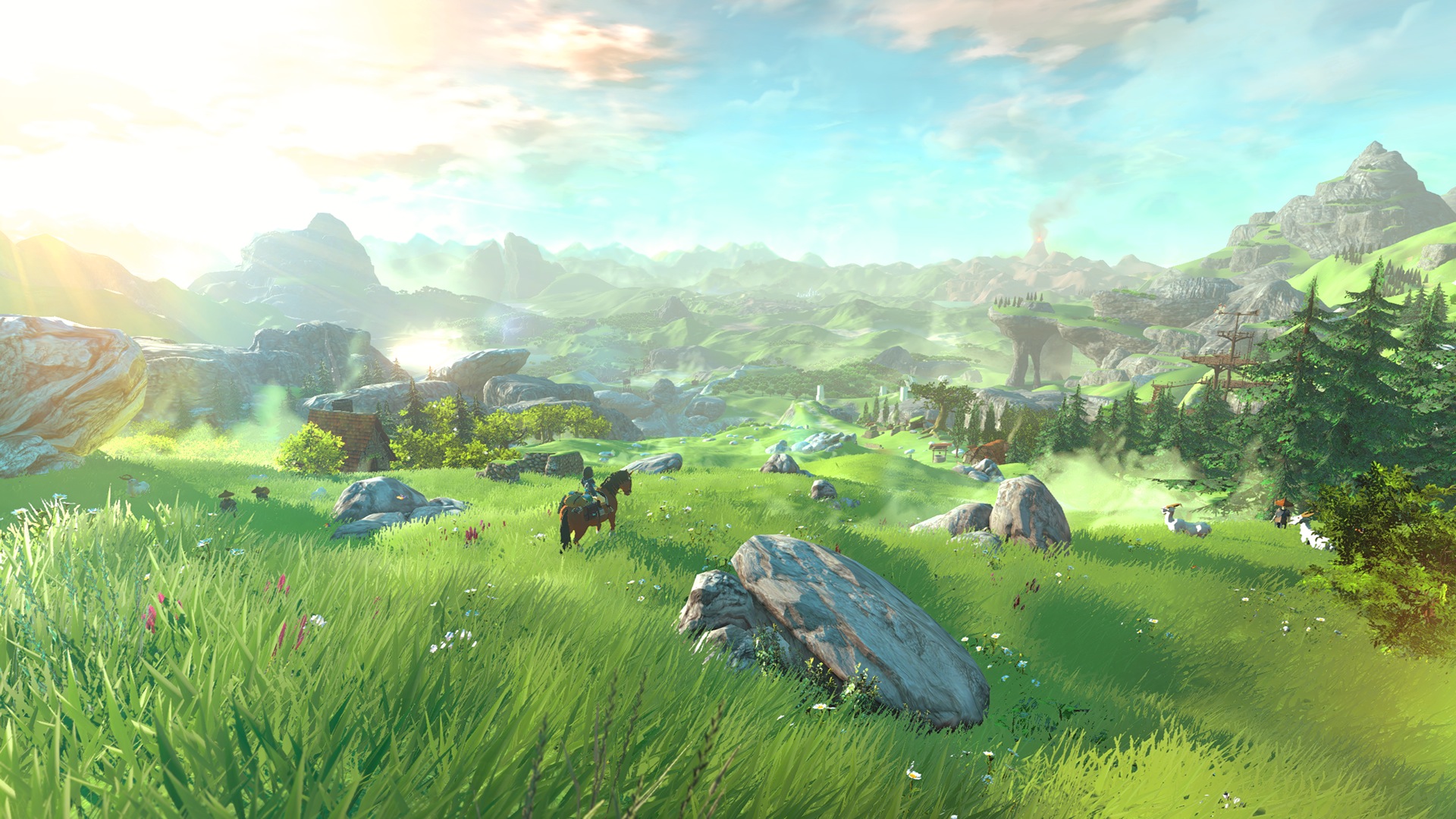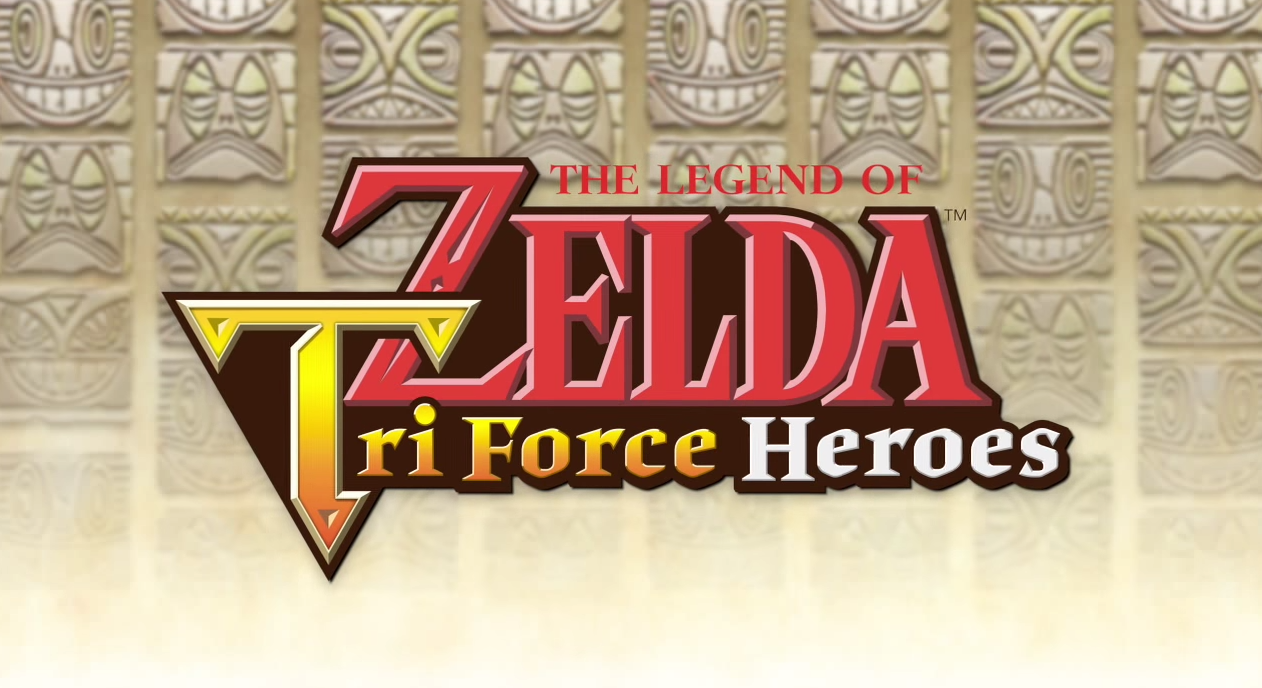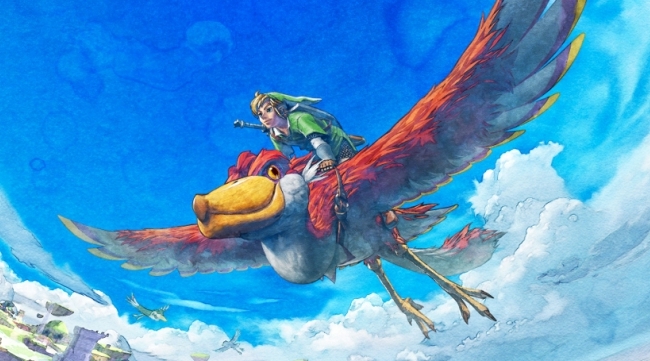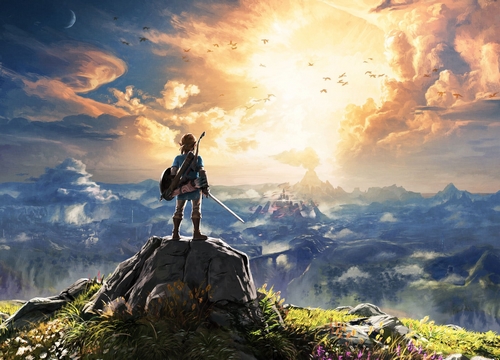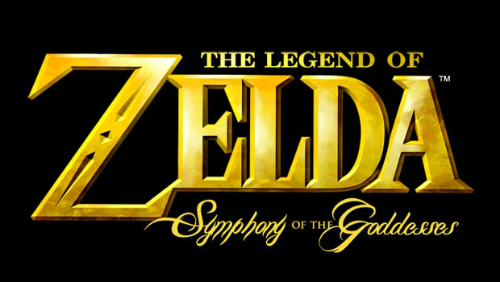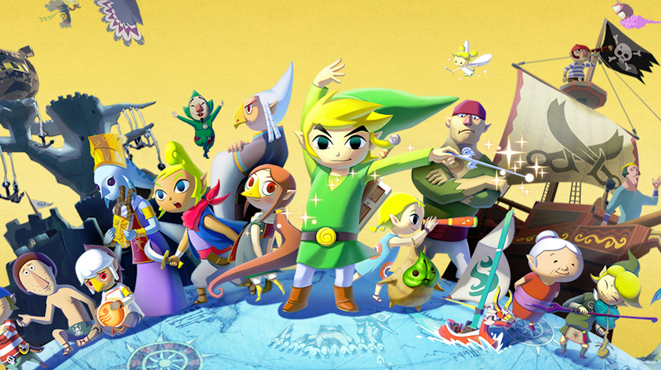
The Legend of Zelda: The Wind Waker HD is not the first time Nintendo has jumped on the “last generation up-port” bandwagon. Both the Xbox 360 and PlayStation 3 saw publishers making liberal use of the idea to fill software gaps, but Nintendo did similarly on the Wii. The Legend of Zelda: Twilight Princess at launch, and later the Metroid Prime Trilogy compilation. Plus the assortment of New Play Control! titles. Yes, Nintendo cashed in on those previous generation up-ports like everyone else, and starting with The Wind Waker HD they’re doing it all over again. It might be the first for their Wii U generation, but I’m confident it wont be the last.
I’m not sure how long we’ll have to wait for a true The Legend of Zelda for Wii U, but The Wind Waker aims to tide things over until then. And it’s an interesting choice of port, give Nintendo had three GCN/Wii tier Zeldas to pick from. While the fanbase is alarmingly divided on which is the best, and what each game does better than the rest, The Wind Waker has the most memorable history, compared to Twilight Princess and Skyward Sword. I can remember the announcement and I’m sure you can too. The Wind Waker, following in the footsteps of the acclaimed Ocarina of Time, and less acclaimed but still sublime Majora’s Mask, introduced an entirely new visual presentation and overworld concept that sent fans into…well, lets just say some bad things were said that, in retrospect, might have been a tad premature.
That being said, The Wind Waker is also the poster child for the “Zelda Cycle”, an ideological belief system in which the most recent Zelda game played (or released) is also the most disappointing, and over time (usually involving replays) folk will grow to appreciate what it did and how it looked, ranking it higher in the series hierarchy than they would have at launch. Half joke, half depressingly real, The Wind Waker personifies that. Backlash of a game that didn’t reach Ocarina of Time‘s highs grew into admiration for its charming characters, colourful presentation, and unmatched sense of adventure. But whether you felt that way at launch or today, The Wind Waker is still a decade old, and a game with many successors that aimed to improve the formula. And so we’re left wondering, Zelda Cycle or not, if The Wind Waker has truly stood the test of time.
At its core, The Wind Waker HD is fundamentally the same game as the original, retaining the same overworld, puzzles, fights, and general game structure. Indeed, this is not a “remake” in the usual sense. But that shouldn’t take away the changes Nintendo has made. While a lot of publishers were happy to recompile their last generation titles to render at a higher resolution and that’s about it, to Nintendo’s credit they’ve actually put a lot more work into this “port” than you might think, both in terms of technology powering the game and elements of the design.
What will first jump out is the new rendering engine. More than a port, The Wind Waker‘s Wii U engine is an almost complete technological overhaul of the GCN build, throwing in new effects and shaders that were impossible to produce on the GCN. A native 1080p output is one thing, giving the game a brilliantly sharp, crisp image quality, but the new lighting and shadow engine is even more impressive. Catching up with the best of the 360/PS3 generation of titles, The Wind Waker HD‘s shadow engine ensures most parts of the environment are casting real time shadows that seamlessly blend into each other and move according to light sources, and ambient occlusions shading the edges of objects in close proximity makes each scene “pop” with a great sense of depth. Rendering distance has been improved, most noticeable on islands with grass, as distant grass is rendered in full and casts a shadow. Textures too have been spruced up, most remade in higher resolution to better suit 1080p while remaining faithful to the original art.
The combination of advanced new technology and spruced up art, for most part, looks astounding. Even with geometry detail that’s still GCN-tier complexity, the work put into the new lighting and shadows, along with ambient occlusions, gives The Wind Waker HD a technological and artistic look that is not comparable to the GCN build. Fact of the matter is, this is a game using technology more suited to modern hardware, further “improving” the visual presentation to more like what we’re used to with modern games. I say “improved”, noting the quotations, because this new lighting/shadow engine does admittedly wrestle with the GCN build’s flat-lit toon shader. Most of the time it’s not a big deal. Any location with a bright, universal light source, like outside in the sun or sailing the ocean, combines the new effects and rendering methods brilliantly. Scenes are colourful, vibrant, and full of life, different but faithful to the original’s look. But inside, near local light sources? Then it starts to fall apart. Best examples I can give are flaming torches, or Moblins holding lamps. The old stylised light source effect has been replaced with a boring, traditional (if technically more complex) illumination source which clashes with the hard cel-shading effect to overly smooth the shader gradients on characters. The result is something more akin to a claymation look than cartoon, but claymation without the extra detail. Toon Link’s model in Super Smash Bros. Brawl, and upcoming Smash 4, show that when under a traditional lighting model the character model needs additional texture detail to better suit a smoother lit 3D mesh. As The Wind Waker generally opts for minimalism in texture detail in order to get that bright colour “pop”, exposing that lack of detail through smooth shadow gradients hurts the presentation. To be fair, it’s a rarity, but does make for some disappointingly odd looking scenes. The Gohma fight in particular looks much worse under The Wind Waker HD‘s lighting model, compared to the hard edge gradients and shading of the original build.
Also, as impressive as the new rendering engine usually is, I did notice a few low frame drops, most often when a lot of particle effects were present, such as hurtling bombs from your boat’s cannon. The Wind Waker HD does a good job of keeping up a locked 30fps with no screen tearing for most of the game, but the dips are disappointing, such as when engaging in cannon warfare with multiple enemy ships.
Gameplay wise, Nintendo has made some subtle yet key changes to important elements of the game that, in my opinion, make for an objectively better experience. You’ll meet Tingle earlier, and the dreaded Triforce quest grind has been streamlined to have you collecting pieces quicker instead of fishing around for maps, significantly improving the late game pacing. You start with a larger wallet, decreasing the early game economy grind. Miiverse integration into the in-game camera lets you grab happy snaps, bottle them, and send them out into the ocean for random strangers to discover. It’s a gimmick, but still neat to see bottles floating in the ocean, knowing you can pick them up and see what message and/or picture someone from across the pond has packed inside. Gyro controls can be used to aim in first person, making bow and grapple aiming faster and more precise than an analogue stick. Your entire inventory and map screen has been placed on the touch screen, a logical decision that makes inventory management and map checking more seamlessly integrated into the flow of play. I’m guessing most of these additions are destined for The Legend of Zelda Wii U, and they’ll be more than welcome.
But the crowning jewel of the changes is the swift sail. Winnable at the Windfall Island auction, the swift sail both significantly increases the speed at which you’ll flow across the ocean, and automates gust direction to whichever direction you’re sailing. In short, it overrides Wind’s Requiem to let you sail freely and unrestrained at a faster pace. Purists might raise an eyebrow, arguing that controlling wind direction manually is part of the experience, but once you play with the swift sail you’ll be hard pressed to go back. Remember, you still need to traverse the ocean and conquer enemies on your own, so there’s no loss of agency. What the swift sail does is eradicate the unnecessary chore of changing wind direction every time you want to make a 90°+ turn. Combined with a faster speed, the simple act of free form sailing and exploring at your leisure is far more inviting than it was in the original build, and more encouraging for you to divert off the path and see what secrets those little silhouetted islands in the distance hold. The Wind Waker‘s sense of adventure and freedom is better here than ever before.
As for the rest of the game? String me up if you must, Zelda fans, but my belief that The Wind Waker‘s game design is one of the weakest in the console series was reaffirmed while going through The Wind Waker HD. I maintain that, a few exceptions aside, there aren’t really any “bad” Zelda games and almost all are well above average. But The Wind Waker is so reliant on its charm and presentation that it loses footing in almost every other area. Combat is flashy, and also far too easy, Link’s parry move still broken to the point of being a win button, and the new Hero Mode (increasing damage, removing heart drops) does little to prevent how easy The Wind Waker‘s battles are to cheese. Excluding the final, almost all of The Wind Waker‘s boss fights are overly simple in structure and defeat pattern, offering little in way of complex puzzle solving and challenge. This is an issue that extends across to the dungeons too, which frequently recycle the same push-block shoot-switch puzzles from Ocarina of Time and Majora’s Mask, and never properly capitalise on the unique ideas introduced, using them too infrequently (like the buddy system) or simplistically to be anything more than a brief diversion from the standard Zelda formula.
There’s an overbearing feeling that structurally The Wind Waker is a bit…rushed. Lazy isn’t the right word, but that good ideas are rarely explored beyond their basic purpose is evidence of a game that could have been more. Where Ocarina of Time made creative use of its various songs to interact and shape the game world and solve puzzles, The Wind Waker has almost none of that. Songs have one use, maybe one alternative for a contextual side quest. Side quests are almost all of the fetch/collection variety. Go here, speak to this person, collect item, trek halfway across the ocean to deliver it to someone else. Rinse, repeat.
It’s never a question of whether The Wind Waker HD is a bad game or not, but instead what exactly about Link’s long ocean journey is memorable. And if you ask me, stripping away the glorious presentation, character, and sense of adventure, almost everything you do in The Wind Waker just isn’t very memorable at all. A handful of surprises and decent climaxes don’t make up for the most forgettable dungeons and boss fights in the 3D series, and puzzles that won’t linger in your memory for their creativity and challenge. It’s too often on autopilot, fumbling as it tries to recapture Ocarina of Time‘s design ideas while running out of its own. And for all their flaws, these are not problems Twilight Princess and Skyward Sword to succumb to, both making a better effort to explore new ideas, surprise with creative dungeon puzzles and boss encounters, and distance themselves from The Legend of Zelda: 101 Dungeon and Game Design.
But, again, this does not make The Wind Waker a bad game, instead one I find a little bit dull in play when considered as part of a greater series. And what I think won’t change the fact that for some fans The Wind Waker is the best the series offers. Admittedly there is a distinct charm to its characters, liveliness of the landscape and population, and thrill to sailing a sprawling blue ocean that bottles a certain kind of magic the other games do not. Most importantly, The Legend of Zelda: The Wind Waker HD isn’t just a port of a good game, the porting process is one of the most invested and impressive I’ve seen from a publisher. Next to a total overhaul of everything that would constitute as a true remake, this is about as good as a port can be, key changes and additions made to the engine and design resulting in a far better playing and (for most part) better looking release.
If you’ve never played The Legend of Zelda: The Wind Waker, entry points don’t get much better than this. And if you’ve played The Wind Waker more times than you can count, The Wind Waker HD introduces enough changes to warrant one more journey.
Significantly improved graphics engine | Charm and character stood the test of time | Smart design improvements make it the definitive version
Dull dungeon and boss design aged poorly | New graphics engine occasionally clashes with cel-shading | Full retail price

